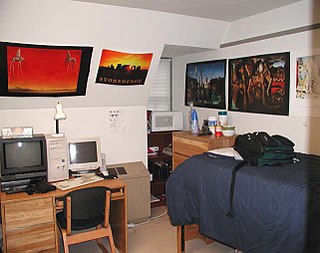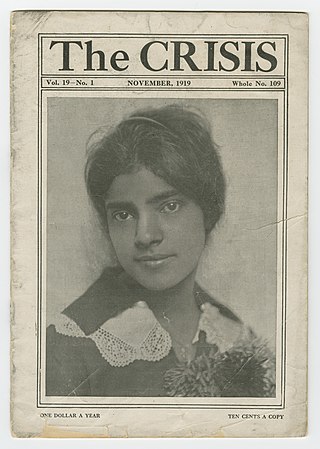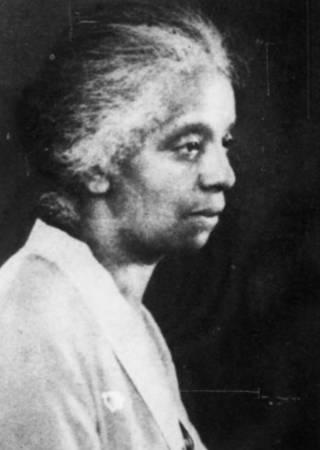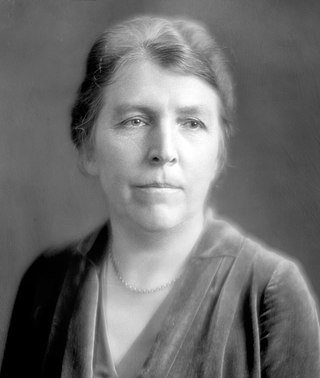
Smith College is a private liberal arts women's college in Northampton, Massachusetts. It was chartered in 1871 by Sophia Smith and opened in 1875. It is the largest member of the historic Seven Sisters colleges, a group of women's colleges in the Northeastern United States. Smith is also a member of the Five College Consortium, along with four other nearby institutions in the Pioneer Valley: Mount Holyoke College, Amherst College, Hampshire College, and the University of Massachusetts Amherst; students of each college are allowed to attend classes at any other member institution. On campus are Smith's Museum of Art and Botanic Garden, the latter designed by Frederick Law Olmsted.

Sarah Lawrence College is a private liberal arts college in Yonkers, New York. Originally a women's college, Sarah Lawrence became coeducational in 1968. A Sarah Lawrence scholarship, particularly in the humanities, performing arts, and writing, places high value on independent study.

A dormitory is a building primarily providing sleeping and residential quarters for large numbers of people such as boarding school, high school, college or university students. In some countries, it can also refer to a room containing several beds accommodating people.

Hobart and William Smith Colleges are private liberal arts colleges in Geneva, New York. They trace their origins to Geneva Academy established in 1797. Students can choose from 45 majors and 68 minors with degrees in Bachelor of Arts, Bachelor of Science, Master of Arts in Teaching, Master of Science in Management, and Master of Arts in Higher Education Leadership.

The Crisis is the official magazine of the National Association for the Advancement of Colored People (NAACP). It was founded in 1910 by W. E. B. Du Bois (editor), Oswald Garrison Villard, J. Max Barber, Charles Edward Russell, Kelly Miller, William Stanley Braithwaite, and Mary Dunlop Maclean. The Crisis has been in continuous print since 1910, and it is the oldest Black-oriented magazine in the world. Today, The Crisis is "a quarterly journal of civil rights, history, politics and culture and seeks to educate and challenge its readers about issues that continue to plague African Americans and other communities of color."

Jessie Redmon Fauset was an editor, poet, essayist, novelist, and educator. Her literary work helped sculpt African-American literature in the 1920s as she focused on portraying a true image of African-American life and history. Her black fictional characters were working professionals which was an inconceivable concept to American society during this time Her story lines related to themes of racial discrimination, "passing", and feminism.
Williston Northampton School is a private, co-educational, day and boarding college-preparatory school in Easthampton, Massachusetts, United States. It was established in 1841.

Baylor School, commonly called Baylor, is a private, coeducational college-preparatory school in Chattanooga, Tennessee. Founded in 1893, the school's current campus comprises 690 acres and enrolls students in grades 6-12, including boarding students in grades 9-12. These students are served by Baylor's 148-member faculty, over two-thirds of whom hold advanced degrees, including nearly 40 adults who live on campus and serve as dorm parents. Baylor has had a student win the Siemens Award for Advanced Placement in math and science and a teacher received the National Siemens Award for Exemplary Teaching.
Foxcroft School, founded in 1914 by Charlotte Haxall Noland, is a college-preparatory boarding and day school for girls in grades 9-12, located near Middleburg, Virginia, United States. In its century of existence, Foxcroft has educated the daughters of corporate titans and congressmen, including women from the Rockefeller, Carnegie, Mellon, Auchincloss and Astor families. It is accredited by the Virginia Association of Independent Schools and the National Association of Independent Schools, and is a founding member of the National Coalition of Girls' Schools.

Otelia Cromwell was a distinguished scholar and Professor of English Language and Literature at Miner Teachers College now known as University of the District of Columbia. She was the first African American to graduate from Smith College, receiving a B.A. in Classics in 1900. She later earned her M.A. at Columbia University in 1910 and a Ph.D. in English at Yale University in 1926, becoming the first African-American woman to earn a doctorate degree there.

Reinhardt University is a private university in Waleska, Georgia. The university has an off-campus center in Alpharetta and offers some programs in Cartersville, Marietta, and Canton, and online. Reinhardt is affiliated with the United Methodist Church.

Sage Hall was built in 1875 at Cornell University's Ithaca, New York campus. Originally designed as a residential building, it currently houses the Johnson Graduate School of Management.

North Campus is a residential section of Cornell University's Ithaca, New York, campus located north of Fall Creek. It primarily houses freshmen. North Campus offers programs which ease the transition into college life for incoming freshmen. The campus offers interactions with faculty and other programs designed to increase interaction among members of the freshman class. North Campus is part of Cornell's residential initiative.

Housing at the Massachusetts Institute of Technology (MIT) consists of eleven undergraduate dormitories and nine graduate dorms. All undergraduate students are required to live in an MIT residence during their first year of study. Undergraduate dorms are usually divided into suites or floors, and usually have Graduate Resident Assistants (GRA), graduate students living among the undergraduates who help support student morale and social activities. Many MIT undergraduate dorms are known for their distinctive student cultures and traditions.

Normal School for Colored Girls established in Washington, D.C., in 1851 as an institution of learning and training for young African-American women, especially to train teachers.

Ada Louise Comstock was an American women's education pioneer. She served as the first dean of women at the University of Minnesota and later as the first full-time president of Radcliffe College.

Housing at the University of Chicago includes seven residence halls that are divided into 48 houses. Each house has an average of 70 students. Freshmen and sophomores must live on-campus. Limited on-campus housing is available to juniors and seniors. The university operates 28 apartment buildings near campus for graduate students.

















